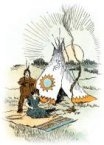
Worksheets and No Prep Teaching Resources
Reading Comprehension Worksheets
Native Americans

Native Americans
 Worksheets and No Prep Teaching Resources Reading Comprehension Worksheets Native Americans |
 Native Americans |
| edHelper's suggested reading level: | grades 4 to 6 | |
| Flesch-Kincaid grade level: | 7.79 |
|
Native Americans in the Northern Area
By Jennifer Kenny |

|
 |
Create Weekly Reading Books
Prepare for an entire week at once! |
| Leave your feedback on Native Americans in the Northern Area (use this link if you found an error in the story) |
 |
Native Americans
|
 |
United States
|
|
|
 | Fifty States Theme Unit |
 |
Document Based Activities |